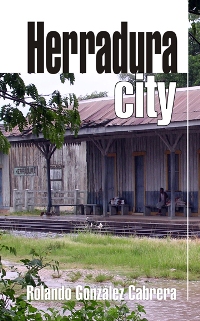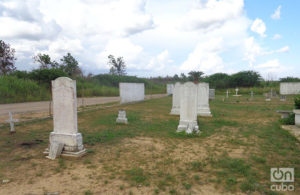 IN PINAR DEL RÍO ALSO THERE WAS AN AMERICAN TOWN, HERRADURA CITY.
IN PINAR DEL RÍO ALSO THERE WAS AN AMERICAN TOWN, HERRADURA CITY.
The ambitious plans of colonization of the Island by North American companies at the end of their intervention at the end of the war with Spain for their precious colony, Cuba, was the beginning of the settlement of towns of North American citizens and of other nationalities like those of Isla de Pinos and those of Camagüey, but also, and perhaps not many know it, also in Pinar del Río. There arose the so-called Herradura City.
The company that had this initiative was called “The Herradura Land Company of Cuba” and began its operations in the territory that today occupies the municipality of Consolación del Sur, at the end of the year 1904 and only one year later, in December of 1905, he would found the colony of Herradura City.
The fundamental productions were the cultivation of citrus, especially oranges, bound for the United States. These settlers were among the first to introduce in Cuba the use of chemical fertilizers to improve the yield of the land, for which they were also pioneers in a scientific analysis of the soils. These studies covered the soils of Herradura and part of those of San Diego de los Baños and greatly benefited agriculture in these places.
Apart from being excellent producers, they were precious in the presentation of their merchandise, to the point that they moved their products in air-conditioned wagons so that they did not lose freshness during the voyage to the North American markets.
They maintained their habits of life by making women, as in the typical farms of the United States, were responsible for feeding chickens, pigs and other animals and diversified their production with the production of cheese, butter, wines that were sold and They had very good acceptance in Cuba and the United States.
The history of some of its first inhabitants is known, when in the first decade of the 20th century, Leon Charles Scott and Rosa Holton Scott arrived in Pinar del Río due to the benefits of the climate and in search of a new beginning. With them came his children Harold, Vivian, Leona and little Theodore. From North Dakota they sold the store they owned to embark on this adventure. Leon Scott created the farm ‘Montevista’, with its extensive orange groves and lived part of the 20s in the United States where he attended high school, in addition to the University in Virginia, where he graduated as an engineer.
Other similar efforts of colonization on the island had already taken place before, and all the settlers began by founding a city in the most staid American style and bringing with it their most deeply rooted customs. And in all cases, knowing that prosperity came with them, people of many nationalities also came, in the case that concerns us, Germans, Canadians, English and Chinese. The cemetery was built in 1906 and initially was only for North Americans.
Northerners bought plots that, with time and work, became prosperous farms that produced fruit and citrus, eggplant, beets, peppers, tomatoes, carrots, pastures for cattle and vertical silos for hay. Until the 1920s, the products of the area were in high demand in the United States and the railroad was the center of the merchandise, which later went by boat to the northern country.
The constructions were made in the northern style as the ‘Royal Palm Hotel’ and the chalet ‘American Society’, centers of social life and festivities, such as those of July 4, and the habits of the country included that in a short time the electricity and Ford cars.
But the decline began when several families left and many of the lands were not very fertile for the fruit trees and the salinization was increasing. American laws and producers in US territory began to dominate the sale of fruits, which added to the banking crack and the crisis of 1929 gave the coup de grace to Herradura City.
By the 1940s the losers had left Horseshoe, only the winners were left as Mr.Gerse and those who like Theodore Scott had taken refuge in the pleasant atmosphere of that place, to which he was still very small. Theodore lived his final days at Rosa’s house, listening to North American stations and reading the magazines brought by his sister Vivian on visits to Cuba.
But despite the failure of Herradura City, the ‘Montevista’ ranch maintained its vitality and good dividends. The Norteno bought the productions of the others, sold them first, and then, with the shortage, gave out theirs. With a truck, he distributed the oranges in hospitals and other centers in Pinar del Río.
There are few traces of what was a prosperous colony in Cuba, but some historians say that the lands are possessed of a type of historical heritage. The present town has the reputation of being a “people of money”, of enterprising and working people, a possible inheritance, of the American sap that was fused with the locals and other emigrants, and that keeps alive the essence of the disappeared colony.
SPONSORS
 EN PINAR DEL RÍO TAMBIÉN HUBO UN PUEBLO AMERICANO, HERRADURA CITY.
EN PINAR DEL RÍO TAMBIÉN HUBO UN PUEBLO AMERICANO, HERRADURA CITY.
Los ambiciosos planes de colonización de la Isla por parte de compañías norteamericanas al terminar su intervención a final de la guerra con España por su colonia preciada, Cuba, hicieron el que comenzaran a surgir en la Isla pueblos enteros de ciudadanos norteamericanos y de otras nacionalidades, como los de Isla de Pinos y los de Camagüey, pero también, y quizás no muchos lo sepan, también en Pinar del Río. Allí surgió el llamado Herradura City.
La empresa que tuvo esta iniciativa se llamó “The Herradura Land Company of Cuba” y comenzó sus operaciones en el territorio que hoy ocupa el municipio de Consolación del Sur, a finales del año 1904 y solamente un año después, en diciembre de 1905, se fundaría la colonia de Herradura City.
Las producciones fundamentales fueron el cultivo de los cítricos, sobre todo naranjas, con destino a Estados Unidos. Estos colonos fueron de los primeros que introdujeron en Cuba el uso de los abonos químicos para mejorar el rendimiento de las tierras, para lo que también fueron pioneros en un análisis científico de los suelos. Estos estudios abarcaron los suelos de Herradura y parte de los de San Diego de los Baños y beneficiaron notablemente a la agricultura en estos lugares.
Aparte de ser excelentes productores, fueron preciosistas en la presentación de sus mercancías, al punto de que trasladaban sus productos en vagones climatizados para que no perdieran frescor durante la travesía hacia los mercados norteamericanos.
Mantuvieron sus hábitos de vida haciendo que las mujeres, como en las típicas granjas de los Estados Unidos, fueran las encargadas de alimentar las gallinas, los cerdos y demás animales y diversificaron sus producciones con la elaboración de queso, mantequilla, vinos que se vendían y tenían muy buena aceptación en Cuba y en Estados Unidos.
Es conocida la historia de algunos de sus primeros pobladores, cuando en la primera década del siglo XX, Leon Charles Scott y Rosa Holton Scott llegaron a Pinar del Río por las bondades del clima y en busca de un nuevo comienzo. Con ellos venían sus hijos Harold, Vivian, Leona y el pequeño Theodore. Procedentes de Dakota del Norte vendieron la tienda que poseían para embarcarse en esta aventura. Leon Scott creó la finca ‘Montevista’, con sus extensos naranjales y vivió parte de la década del 20 en Estados Unidos donde cursó la enseñanza media, además de la Universidad en Virginia, donde se graduó de ingeniero.
Ya antes se habían producido otros empeños similares de colonización en la Isla y en todos los colonos comenzaban fundando una ciudad al más rancio estilo estadounidense y traer con ellos sus más arraigadas costumbres. Y en todos los casos, sabiendo que con ellos venía la prosperidad, vinieron también personas de muchas nacionalidades, en el caso que nos ocupa, alemanes, canadienses, ingleses y chinos. El cementerio fue construido en 1906 e inicialmente era solamente para norteamericanos.
Los norteños compraron parcelas que, con tiempo y trabajo, se convirtieron en fincas prósperas que producían frutales y cítricos, berenjenas, remolachas, pimientos, tomates, zanahorias, pastos para el ganado vacuno y silos verticales para el heno. Hasta la década de 1920, los productos de la zona eran muy demandados en Estados Unidos y el ferrocarril era el centro del trasiego de mercancías, la que después iba por barco a al país del norte.
Las construcciones se hicieron al estilo norteño como el ‘Royal Palm Hotel’ y el chalet ‘American Society’, centros de la vida social y las festividades, como las del 4 de Julio, y los hábitos del país incluyeron que en poco tiempo llegara la electricidad y los autos Ford.
Pero comenzó el declive cuando varias familias se marcharon y muchas de las tierras no eran muy fértiles para los frutales y la salinización iba en aumento. Las leyes estadounidenses y los productores en territorio norteamericano comenzaron a dominar la venta de frutas, lo que sumado al crack bancario y la crisis de 1929 le dio el golpe de gracia a Herradura City.
Para los años 40 los perdedores se habían marchado de Herradura, solo quedaban los triunfadores como Mr.Gerse y aquellos que como Theodore Scott se habían acogido al agradable ambiente de aquel lugar, al que llegó siendo aún muy pequeño. Theodore vivió sus días finales en casa de Rosa, escuchando emisoras norteamericanas y leyendo las revistas traídas por su hermana Vivian en las visitas a Cuba.
Pero a pesar del fracaso de Herradura City, la hacienda ‘Montevista’ mantuvo su vitalidad y buenos dividendos. El norteño compraba las producciones de los demás, las vendía primero, y después, con la escasez, daba salida a las suyas. Con un camión distribuía las naranjas en los hospitales y otros centros de Pinar del Río.
Hay escasos rastros de lo que fuera una próspera colonia en Cuba, pero algunos historiadores dicen que las tierras son poseedoras de un tipo de herencia histórica. El pueblo actual posee la fama de ser un “pueblo de dinero”, de gente emprendedora y trabajadora, una herencia posible, de la savia estadounidense que se fundió con los lugareños y otros emigrantes, y que mantiene viva la esencia de la desaparecida colonia.
Agencies/MemoriasCubanas/Internet PHotos/ Arnoldo Varona/ TheCubanHistory.com
THE CUBAN HISTORY, HOLLYWOOD.
SPONSORS









